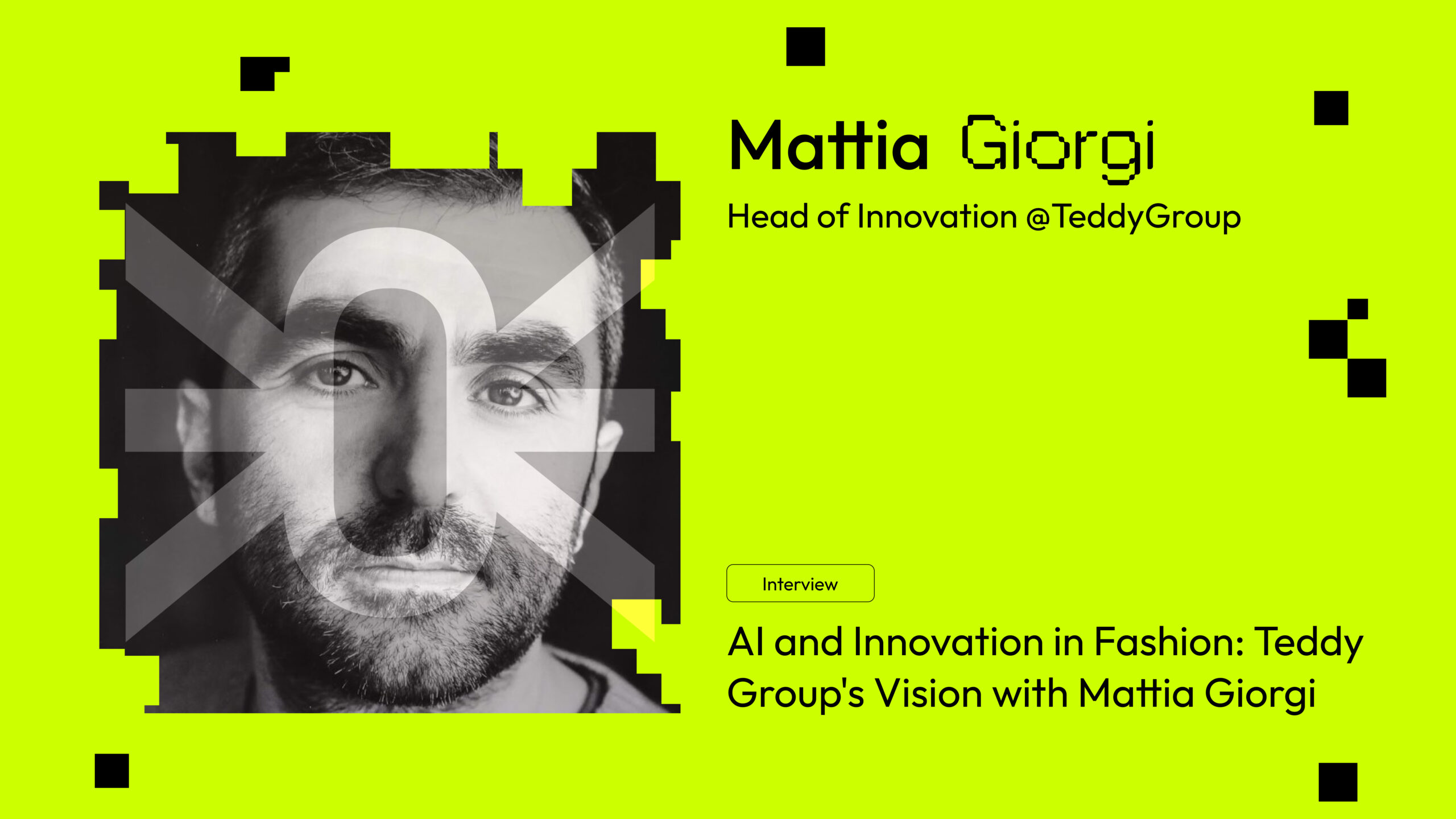AI and Innovation in Fashion: Teddy Group’s Vision with Mattia Giorgi

The interview series curated by Francesco Cerisano, founder of Aracne, continues with a conversation with Mattia Giorgi, Head of AI & Innovation at Teddy Group. In this insightful discussion, Mattia shares his journey in digital innovation and reveals how artificial intelligence is reshaping the fashion industry at Teddy Group—from optimizing internal processes to enhancing customer experience, and exploring new frontiers in product design with generative AI. A must-read interview for anyone interested in the transformative power of AI in fashion!
We’d like to know more about your background. What were the main milestones that led you to your current role as Head of AI & Innovation at Teddy Group?
I’ve been involved in digital since 2005, with experience spanning from marketing to e-commerce management, overseeing website and app development, and product development. This mix of skills allowed me to gain a 360-degree view of business, helping me identify areas for improvement within company processes from a holistic perspective.
Working in various environments, from multinationals like Google to small start-ups, taught me how to optimize budget management effectively. My inclination to experiment did the rest, and when we decided at Teddy not to be unprepared for technological evolutions, especially AI, I was given the opportunity to dedicate myself to innovation full-time.
The Teddy Group, with brands like Terranova, Calliope, and Rinascimento, is embracing technological innovation. Could you share some projects or initiatives where AI has been integrated to enhance business processes or customer experience?
In terms of customer experience, beyond the classic product recommendations, we recently implemented an AI-based system that successfully suggests complete outfits within our product pages, Bantoa Stylemix.
In the past, we also tested visual search, though it didn’t meet user preferences.
As for business processes, there are two main cases I can mention:
- Content creation support: This system not only facilitates the work of our in-house staff but also allows us to quickly test different tones of voice.
- Integration of a generative AI tool in product prototyping (Raspberry AI): Starting from market trends, we generate product variations from both text (text-to-image) and technical drawings (sketch-to-render).
This process allows designers to experiment faster and better capture what our customers desire.
Are there any start-ups or emerging technologies in AI applied to fashion that you find particularly promising? Is Teddy Group currently collaborating with any in this area?
At the moment, there are many interesting start-ups around, which makes this a truly exciting time to experiment.
AI video systems, especially with video-to-video features, are excellent for combating creative fatigue in advertising, especially for those using video formats.
I’m particularly interested in services that allow for the creation of ad videos with virtual avatars like HeyGen and Captions.
Another interesting tool is Sociate, which automatically classifies products based on social media trends. This is useful both for the website and store staff, as it enables them to better respond to customer requests.
The two most exciting services I’ve tried recently are Anam AI and GenWay.
- Anam AI allows users to interact with ultra-realistic virtual avatars that can display facial expressions and correctly understand and respond to complex questions, which is truly impressive.
- GenWay, on the other hand, is a service that allows you to conduct interviews with users in dialogue form. These interviews can range from product tests to usability or shopping experience tests, providing valuable feedback.
Beyond your work with Teddy Group, have you observed any interesting examples of AI applications in the fashion supply chain, either in Italy or abroad, that you find particularly relevant to the future of the industry?
From what I observe, in Italy, AI is mainly used for supporting data analysis, stock planning, and size recommendation systems.
Abroad, particularly in the United States, I see a broader use of generative AI in product design, an area that seems less explored in Italy.
Beyond the fashion sector, one interesting aspect relevant to any industry is AI orchestration platforms, such as Thread AI, which recently emerged from “stealth mode.” These platforms are essential for coordinating and optimizing the integration of different AI solutions within companies, offering cross-industry value applicable in many contexts.
I’ve committed to engaging with both Italian and international brands to share experiences on this topic, aiming to gain a clearer view of the current market landscape. The opinions I’ve shared are based on my personal impressions.
Looking to the future, what do you consider the main opportunities for AI in the fashion sector? Where do you see the greatest potential for positive transformation?
I see many opportunities: from communication (video, images, text) to personalizing user experiences, product design, stock and merchandising planning, and market research. All these elements can contribute to a positive transformation in the sector, as they have the potential to reduce waste, enabling more efficient and targeted production, delivering exactly what the customer is looking for.
How can AI help make fashion supply chain processes more sustainable? Has Teddy Group started exploring AI solutions in this area?
This isn’t a topic I’m directly working on, so for a more detailed answer, I would need to consult with my colleagues. However, I can say that sustainability is a highly important topic for Teddy Group, independent of AI usage.
From my perspective, as I mentioned earlier, the main contribution AI can offer is in optimizing production and distribution, making them more efficient.


